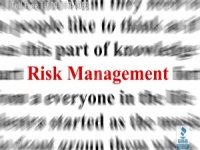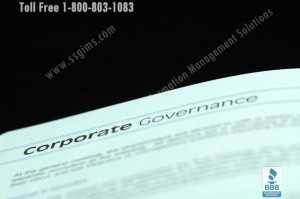Posts Tagged ‘records management program’
Developing and Managing the Lifecycle of Records
 Importance of Records Management
Importance of Records Management
Records management systems are typically developed in one of two ways. First, there’s the approach most companies take. They start with a very basic filing system that serves the purpose of managing a small collection of records. Often, an entry level staff member with no records management background is tasked with creating the filing system in an attempt to reduce the labor costs associated with the project.
These individuals will use a combination of whatever methods and tools they are most familiar with (top tab folders, alphabetical filing, handwritten labels, basic color coding, etc). As the records continue to accumulate, the filing system becomes more unwieldy and error prone. Things get lost or misfiled, records that should have been discarded long ago keep clogging up the system, and finding a file quickly becomes difficult.
The other approach is to carefully design a filing system that accounts for how files and other information will be managed throughout their lifecycle, regardless of how extensive the records become. Fortunately, it’s never too late to switch from an outdated and inefficient filing system to an information management solution that really meets your company’s needs.
Information Compliance Risks
From security to retention, federal and state regulatory agencies have very strict rules for how businesses manage their information and records. Missing documents, incomplete records, or unsecured files are a big liability. Implementing a records management program with properly designed records management software establishes and enforces internal business guidelines that meet government standards. For example, you can set up record retention and disposition schedules to eliminate records that are past their retention date. These practices increase your level of compliance and reduce your risk of government fines and penalties in the event of an audit.
 Advanced Technology Reduces Cost
Advanced Technology Reduces Cost
Various forms of records management technologies will support best practices for managing the lifecycle of records. Technologies like file labeling software, barcode scanning and RFID (Radio Frequency Identification) tagging allows you to track and manage a large number of records quickly and accurately. Paired with the right software solution, you can create a seamless records management system that enhances your ability to create, label, review, inventory, transfer, and dispose of records efficiently. Records management software cuts down on the time you spend looking for (or recreating) missing records. Records management software has advanced security features allowing you to set and restrict access to appropriate personnel. Since a comprehensive audit trail is built in to the technology, you have a complete history showing when each record was create and accessed throughout its lifecycle.
Assessing Your Records and Information Management System
Need help assessing your records and information management system? Southwest Solutions Group provides a free 30 minute phone assessment of your filing system. Call today at 1-800-803-1083 for your free assessment or contact us by email at info@ssgims.com. We have the knowledge, expertise, and products to improve your records management process, no matter what stage it is in!
Click here to see a list of our records management consulting services.
Conducting A Records and Information Management Audit
 Records and Information Management Audit
Records and Information Management Audit
With the influx of compliance, e-discovery and retention policies, many organizations are desperately seeking to stifle their RIM (Records & Information Management) woes. More often than not, organizations try to fix information management problems at the end of the life cycle without understanding the beginning of the records creation process. Implementing a RIM audit program will help provide solutions that will alleviate record keeping issues at the end of the life cycle. Whether you conduct a RIM inventory/audit yourself or hire an outside resource, the following is a minimum starting place for development of a sound RIM audit program.
 What Documents Are Being Created?
What Documents Are Being Created?
Identify file/document types within each department that are being created. Often times you will find they are not necessarily in line with your retention schedule; something you don’t want to find out in a litigation scenario.
How Are Records Being Created?
How are these records being created and indexed? Are electronic documents printed and filed? Understanding how records are created plays a significant role in solving the mystery of how to manage the information and develop a consistent process that takes the guesswork away from the end user and defines the life cycle of the record. Doing it right in the beginning of the life cycle allows technology solutions to take care of it at the end.
 Where Are Documents Being Stored?
Where Are Documents Being Stored?
Where are the documents being stored? Are there duplicate copies unaccounted for? Lack of confidence in corporate record policies and process drives us to create multiple copies of documents so that we always have access. The problem is that when it’s time to apply retention schedules, how do we ensure that we have included the plethora of rogue copies? Understanding where these documents are, and implementing a process for the creation and retrieval of them, along with good training, will help alleviate this issue.
When Does a Record Become a Record?
Too often, documents are neither indexed nor classified until the middle or end of the life cycle. They live in a limbo state often referred to as “working documents”. Documenting and understanding when your end users create records will help define your record policy and ensure that the organizations intellectual property is identified and secured.
Why Do We Do It This Way?
Undoubtedly the most important question to consider when conducting the audit is “why”! “Why do you do it this way?” And the most common answer is….”Because we’ve always done it that way!” Understanding “why” is the first step in improving your records management program and changing the culture of your organization.
Conducting a RIM Audit will provide upper management the information they need to make better enterprise wide decisions for your business.
For more information about how Southwest Solutions Group can help you through the maze of Records and Information Management, call 1-800-803-1083 or click here to contact us.




